What do the world’s biggest companies have in common when it comes to growth and market dominance? They often turn to mergers and acquisitions (M&A) to achieve these goals.
What is meant by mergers and acquisitions?
Mergers and Acquisitions (M&A) are powerful strategies businesses use to grow, diversify, or strengthen their market positions. A merger happens when two companies combine to form a unified entity, while an acquisition occurs when one company purchases another.
According to Stephan Feldgoise and Mark Sorrell, co-heads of Goldman Sachs’ global M&A business, the M&A market is gaining momentum, with deal activity rising by 10% in 2024 and expected to grow further in 2025 due to lower borrowing costs and strategic repositioning.
This blog explores the top 20 biggest mergers and acquisitions companies deals, their impact, and what businesses can learn from them.
List of Top 20 Biggest Mergers And Acquisitions in History
| Sr. no. | Mergers & Acquisitions | Year | Transaction Value |
| 1. | Vodafone Airtouch plc and Mannesmann | 1999 | $183.0 billion |
| 2. | AOL and Time Warner | 2000 | $182.0 billion |
| 3. | Verizon Communications and Vodafone Group | 2013 | $130.0 billion |
| 4. | Dow Chemical and E. I. du Pont de Nemours and Company | 2015 | $130.0 billion |
| 5. | United Technologies and Raytheon | 2019 | $121.0 billion |
| 6. | Gaz de France and Suez S.A. | 2007 | $107.0 billion |
| 7. | AB InBev and SABMiller | 2015 | $107.0 billion |
| 8. | Heinz and Kraft | 2015 | $100.0 billion |
| 9. | RFS Holdings and ABN Amro | 2007 | $98.0 billion |
| 10. | Royal Dutch Petroleum and Shell Transport & Trading Company plc | 2004 | $95.0 billion |
| 11. | Pfizer and Warner-Lambert | 1999 | $90.0 billion |
| 12. | Energy Transfer Equity and Energy Transfer Partners | 2018 | $90.0 billion |
| 13. | Linde AG and Praxair | 2017 | $86.0 billion |
| 14. | AT&T and Time Warner | 2016 | $85.4 billion |
| 15. | Cheung Kong Holdings and Hutchison Whampoa | 2015 | $85.0 billion |
| 16. | Unilever plc and Unilever N.V. | 2020 | $81.0 billion |
| 17. | BHP Group Limited and BHP Group plc | 2021 | $80.7 billion |
| 18. | Charter Communications and Time Warner Cable | 2015 | $78.7 billion |
| 19. | Glaxo Wellcome and SmithKline Beecham | 2000 | $76.0 billion |
| 20. | Bristol-Myers Squibb and Celgene | 2019 | $74.0 billion |
1. Vodafone Airtouch plc acquired Mannesmann
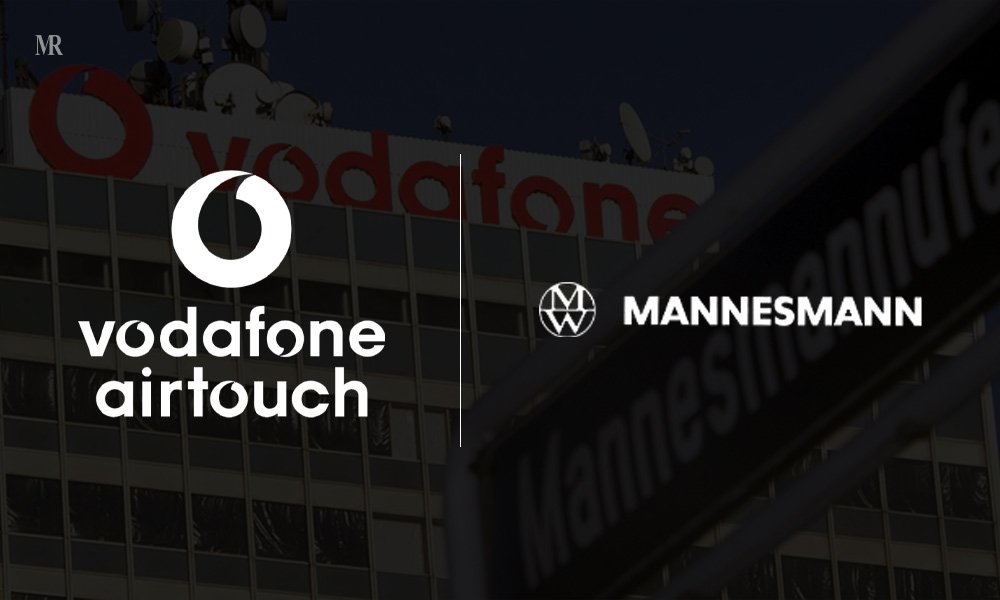
- Purchaser: (United Kingdom) Vodafone Airtouch plc
- Purchased: (Germany) Mannesmann
- Inflation Adjusted: $334.7 billion
On November 13, 1999, UK-based Vodafone AirTouch, the world’s leading mobile phone group, launched a bid to acquire Germany’s Mannesmann AG, a prominent telecommunications and engineering company.
The proposed deal was structured as a share exchange, but Mannesmann’s executive board swiftly rejected the offer, describing it as “inferior.”
After extensive negotiations, an agreement was reached where Mannesmann shareholders received 58.96 Vodafone shares per Mannesmann share. This exchange translated to Mannesmann shareholders holding a 49.5% stake in the newly merged entity, while Vodafone retained a 50.5% stake.
On February 2000, Vodafone Airtouch plc acquired Mannesmann for a transaction value of $183.0 billion, making it the largest mergers and acquisitions in history.
The acquisition marked a turning point in global telecommunications, creating a massive multinational corporation with significant market influence.
2. AOL merged with Time Warner
- Purchaser: (United States) AOL
- Purchased: (United States) Time Warner
- Inflation Adjusted: $322 billion
The 2nd biggest mergers and acquisitions in the world was when AOL merged with Time Warner for a transaction value of $182.0 billion. The AOL and Time Warner merger was approved by the Federal Trade Commission in December 2000 and officially completed in January 2001.
Under the terms of the deal, AOL shareholders owned 55% of the new company, while Time Warner shareholders held 45%.
Leadership changes included Steve Case, AOL’s co-founder, becoming chairman of the merged company, while Gerald Levin, Time Warner’s CEO, took on the role of CEO.
The merger brought together a diverse portfolio of iconic brands, including AOL, CompuServe, Netscape (online services), CNN, TBS, TNT, Cartoon Network (television networks), HBO (premium cable), Warner Music Group (music industry), Time, Fortune, Sports Illustrated, and Entertainment Weekly (magazines), and Looney Tunes (animated characters).
Despite its grand ambitions to merge traditional media with emerging internet services, the merger struggled to deliver the expected synergies and faced significant challenges in the years that followed.
3. Verizon Communications Inc. acquired Vodafone Group Plc’s
- Purchaser: (United States) Verizon Communications Inc
- Purchased: (United States) Vodafone Group Plc’s
- Inflation Adjusted: $170 billion
In 2013, Verizon Communications Inc. made a landmark move by acquiring Vodafone Group Plc’s 45% stake in Verizon Wireless for $130 billion. This acquisition allowed Verizon to gain complete control over Verizon Wireless, the most profitable mobile phone carrier in the United States.
The agreement was that $58.9 billion cash would be paid by Verizon to Vodafone. The company also agreed to issue to Vodafone shareholders $60.2 billion in stock.
By owning 100% of the company, Verizon positioned itself to fully benefit from the growing demand for mobile services in the U.S.
This deal also significantly boosted Verizon’s ability to invest in its network infrastructure, improve customer service, and lead in the competitive wireless industry. The transaction makes it one of the biggest mergers and acquisitions ever in the telecommunications sector.
4. Dow Chemical merged with E. I. du Pont de Nemours and Company
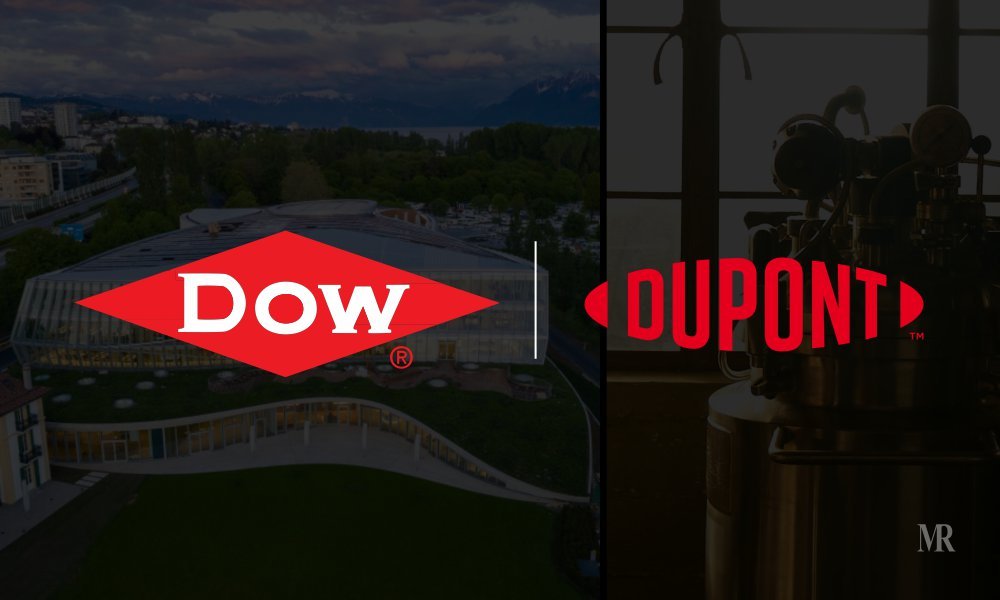
- Purchaser: (United States) Dow Chemical
- Purchased: (United States) E. I. du Pont de Nemours and Company
- Inflation Adjusted: $167.1 billion
In 2015, Dow Chemical and E. I. du Pont de Nemours merged to create DowDuPont, a global leader in agriculture, materials science, and specialty chemicals.
Dow Chemical merged with E. I. du Pont de Nemours and Company at around $130 billion, making it the 4th biggest mergers and acquisitions ever!
According to the terms of the merger agreement, Dow shareholders were entitled to receive one share of DowDuPont for each Dow share they held. DuPont shareholders, on the other hand, received 1.282 shares of DowDuPont for each DuPont share.
After the merger, shareholders of both Dow and DuPont owned approximately 50% of the newly formed company on a fully diluted basis, excluding any preferred shares.
To address regulatory concerns, DowDuPont later announced its plan to split into three independent companies, each specializing in a core area: agriculture (Corteva), materials science (Dow), and specialty products (DuPont).
5. United Technologies merged with Raytheon
- Purchaser: (United States) United Technologies – Aerospace Division
- Purchased: (United States) Raytheon
- Inflation Adjusted: $144.2 billion
One of the world’s largest aerospace and defense companies was created in 2019 when United Technologies and Raytheon merged in a $121 billion deal creating Raytheon Technologies.
The merger combined United Technologies’ expertise in aerospace systems with Raytheon’s advanced defense technologies, forming a powerhouse capable of addressing both military and commercial aviation needs.
Under the agreement unanimously approved by both boards, Raytheon shareholders will receive 2.3348 shares of the merged company for each Raytheon share. After the merger, United Technologies shareholders will own about 57%, and Raytheon shareholders will own approximately 43% of the combined company.
This world’s biggest mergers and acquisitions in the aerospace and defense sector underscored the need for scale and technological leadership.
6. Gaz de France merged with Suez S.A.
- Purchaser: (France) Gaz de France
- Purchased: (France) Suez S.A.
- Inflation Adjusted: $157.2 billion
The 6th biggest mergers and acquisitions ever occurred when Gaz de France merged with Suez S.A creating one of the world’s largest liquefied natural gas company.
On 25 February 2006, French Prime Minister Dominique de Villepin announced the merger of Suez and Gaz de France (GDF). Since the French state-owned over 80% of GDF, a new law was required to facilitate the merger, which was overseen by R N Rothschild & Sons Investment Bank.
On 3 September 2007, the merger was finalized at a transaction value of $107.0 billion. The terms agreed to exchange 21 GDF shares for 22 Suez shares, leading to the absorption of Suez by GDF. Following the merger, the French state held more than 35% of the newly formed company, GDF Suez.
7. AB InBev acquired SABMiller
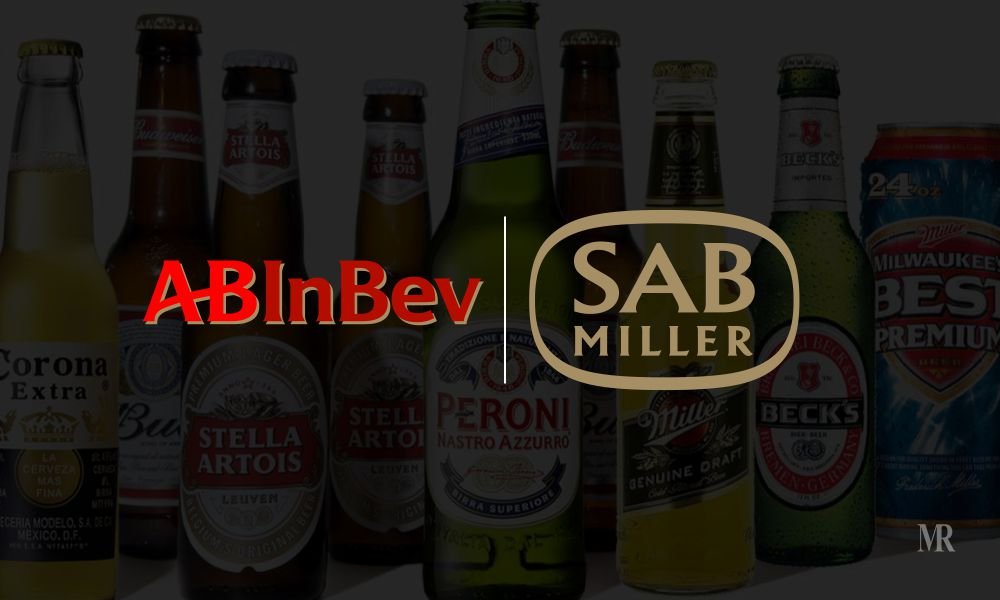
- Purchaser: (Germany) AB InBev
- Purchased: (United Kingdom) SABMiller
- Inflation Adjusted: $137.5 billion
In 2015, AB InBev acquired SABMiller for $107 billion, forming the world’s largest brewing company.
Completed on October 10, 2016, the deal marked the largest-ever takeover of a London-listed company and involved significant antitrust complexities due to the merger of the top two global brewers.
AB InBev’s acquisition of SABMiller was approved with 95.5% shareholder support during a brief meeting in London, surpassing the required 75%. While major shareholders like Altria Group and the Santo Domingo family supported the deal, some, including Aberdeen Asset Management, opposed it, citing undervaluation.
This merger brought together iconic beer brands like Budweiser, Stella Artois, and Peroni under one roof, expanding AB InBev’s presence in emerging markets, especially in Africa and Latin America.
Despite these challenges, the merger cemented its position as the biggest mergers and acquisitions in the world of beverages.
8. Heinz merged with Kraft
- Purchaser: (United States) Heinz
- Purchased:(United States) Kraft
- Inflation Adjusted: $128.5 billion
In 2015, Kraft Foods Group and H.J. Heinz Co. merged in a $100 billion deal, creating Kraft Heinz, now the world’s 11th-largest food and beverage company.
Orchestrated by 3G Capital and Berkshire Hathaway, the merger added to Kraft Heinz’s legacy of acquisitions and placed it among the most famous merger companies list.
As of September 2024, Berkshire Hathaway holds the largest stake at 26.93%, followed by BlackRock (7.64%), Vanguard Group (5.89%), and State Street Corporation (3.15%).
The merger combined well-known brands like Heinz ketchup, Kraft cheese, and Oscar Mayer hot dogs, allowing the new company to expand its product portfolio and reach more customers.
Following the merger, Heinz Kraft focused on innovation, expanding its product offerings, and cutting down on costs.
9. RFS Holdings acquired ABN Amro
- Purchaser: (Scotland) (Belgium) (Spain)
- Purchased: (Netherlands) ABN Amro
- Inflation Adjusted: $144 billion
ABN AMRO the third-largest Dutch bank was formed in 1991 from the merger of two major Dutch banks i.e. Amsterdam – Rotterdam Bank (AMRO) and Algemene Bank Nederland (ABN).
In October 2007, ABN AMRO was acquired by a consortium of banks—RBS (38%), Fortis Bank (34%), and Banco Santander (28%)—known as RFS Holdings BV.
The acquisition, valued at approx $73.1 billion today, aimed to create stronger market positions and growth prospects by offering $31.26 in cash plus 0.844 new RBS shares for each ABN AMRO share.
The deal was approximately 79% cash and positioned Fortis as a market leader in Benelux retail and commercial banking. RBS expanded its corporate and institutional banking, and Santander solidified its position among the top three banks by network and loans.
10. Royal Dutch Petroleum merged with Shell Transport & Trading Company plc

- Purchaser: (Netherlands) Royal Dutch Petroleum
- Purchased: (United Kingdom) Shell Transport & Trading Company plc
- Inflation Adjusted: $153.2 billion
In 2005, Royal Dutch Shell became the sole parent company of the Royal Dutch Petroleum Company and Shell Transport and Trading Company. This occured after merging with a transaction value of $95.0 billion.
This restructuring was achieved through an exchange offer for Royal Dutch shares and a scheme of arrangement for Shell Transport.
The transaction preserved the historical 60:40 ownership structure of the Royal Dutch/Shell Group, reflecting Royal Dutch’s and Shell Transport’s respective stakes.
Royal Dutch Shell plc issues two classes of shares: “A” shares and “B” shares, which hold identical rights except for their dividend income source.
- “A” Shares: Dividends are derived from a Dutch source.
- “B” Shares: Dividends are intended to have a UK source.
Both classes are traded on the London Stock Exchange and Euronext Amsterdam, and are available as ADRs (American Depositary Receipts) on the New York Stock Exchange. This dual share structure accommodates shareholders in different tax jurisdictions.
This move unified the operations under one streamlined corporate entity and made it the 10th biggest mergers and acquisitions in history.
11. Pfizer acquired Warner-Lambert
- Purchaser: (United States) Pfizer
- Purchased: (United States) Warner-Lambert
- Inflation Adjusted: $164.6 billion
In 2000, Pfizer acquired Warner-Lambert for approximately $90 billion, making it the 11th biggest mergers and acquisitions deal in history.
The deal was driven by Pfizer’s desire to gain full control over the blockbuster cholesterol-lowering drug Lipitor, which was co-marketed by both companies.
Warner-Lambert initially sought a merger with American Home Products, but Pfizer intervened with a hostile takeover bid, ultimately offering $96.40 per share (or $82.4 billion).
The acquisition boosted Pfizer’s annual revenue by 37%, transforming it into a pharmaceutical powerhouse.
12. Energy Transfer Equity merged with Energy Transfer Partners
- Purchaser: (United States) Energy Transfer Equity
- Purchased: (United States) Energy Transfer Partners
- Inflation Adjusted: $109.2 billion
In 2018, Energy Transfer Equity acquired Energy Transfer Partners in a $90 billion deal, creating a larger and more efficient energy infrastructure company.
At the time of the merger, each ETP common unit was exchanged for 1.28 ETE common units, resulting in the issuance of approximately 1.46 billion ETE common units to ETP unitholders.
Energy Transfer Equity, a master limited partnership, owns the general partner and 100% incentive distribution rights (IDRs) of Energy Transfer Partners.
This move helped consolidate their assets, including pipelines and storage facilities, allowing the combined company to meet the growing demand for natural gas and energy products.
Following the acquisition, Energy Transfer was able to strengthen its presence in the energy market, making it one of the biggest mergers and acquisitions.
13. Linde AG merged with Praxair

- Purchaser: (Germany) Linde AG
- Purchased: (United States) Praxair
- Inflation Adjusted: $106.9 billion
In 2017, Linde AG and Praxair merged in an $86 billion deal, creating one of the world’s largest industrial gas companies.
As part of the merger, Praxair shareholders received one Linde plc share for each Praxair share. Also, Linde AG shareholders who accepted the exchange offer received 1.54 Linde plc shares for each Linde AG share tendered.
Approximately 92% of Linde AG’s outstanding shares participated in the exchange. Fractional shares were aggregated, sold, and shareholders received cash proportional to their share in the proceeds.
The merger combined Linde’s expertise in healthcare and technology gases with Praxair’s strengths in industrial gases, enabling it to serve diverse industries, from healthcare to manufacturing.
The merger strengthened the company’s position as one of the biggest mergers and acquisitions in the industrial gas sector.
14. AT&T acquired Time Warner
- Purchaser: (United States) AT&T
- Purchased: (United States) Time Warner
- Inflation Adjusted: $108.4 billion ($138 billion with debt)
In 2016, AT&T acquired Time Warner for $85.4 billion, or $108.7 billion including debt.
Under the merger terms, Time Warner shareholders received $107.50 per share, including $53.75 in cash and $53.75 in AT&T stock, with the stock portion subject to a collar based on AT&T’s stock price.
The deal diversified AT&T’s revenues, with Time Warner contributing about 15% from media and international markets like Latin America.
Time Warner’s low capital intensity and lighter regulation balanced AT&T’s higher capital needs. The merger combined AT&T’s telecom strength with Time Warner’s media assets like HBO, Warner Bros., and CNN, enabling AT&T to offer a broader range of services, from TV and internet to streaming.
Post-merger, AT&T focused on integrating Time Warner’s assets to strengthen its position in the media and entertainment industry. But the deal eventually failed even though it was one of the biggest mergers and acquisitions.
15. Cheung Kong Holdings merged with Hutchison Whampoa
- Purchaser: (Hong Kong) Cheung Kong Holdings
- Purchased: (Hong Kong) Hutchison Whampoa
- Inflation Adjusted: $109.3 billion
The 15th biggest mergers and acquisitions ever took place in 2015 when Cheung Kong Holdings merged with Hutchison Whampoa in an $85 billion deal. This formed the Cheung Kong Property Holdings Limited – a Hong Kong conglomerate.
The merger combined Cheung Kong’s property development and infrastructure interests with Hutchison Whampoa’s global presence in retail, telecommunications, and energy.
As part of the transaction, around 6% of Husky Energy Inc.’s shares were transferred to the Hutchison Group in exchange for CK Hutchison Holdings shares.
This deal strengthened the company’s position in logistics, telecommunications, and global retail, with brands like Watsons, while expanding its international footprint, particularly in Europe and Asia.
16. Unilever plc merged with Unilever N.V.
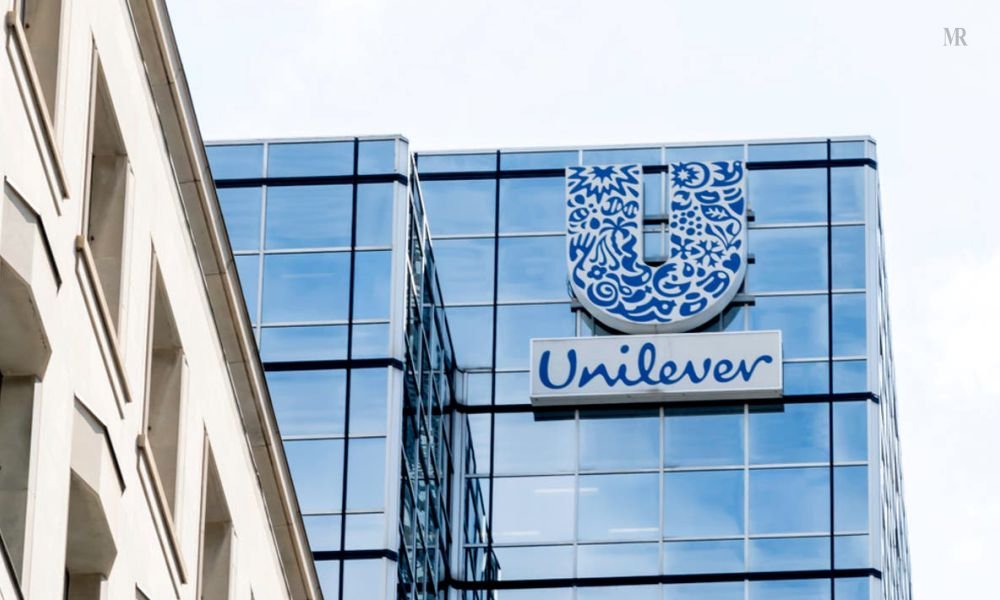
- Purchaser: (United Kingdom) Unilever plc
- Purchased: (Netherlands) Unilever N.V.
- Inflation Adjusted: $95.4 billion
In 2020, Unilever plc and Unilever N.V. merged, creating a unified company valued at $81 billion. The merger combined the Dutch and British legal entities into a single holding company.
Shareholders of N.V. and N.V. NYRS (excluding those who withdrew) received one New PLC Share or New PLC ADS for each N.V. Share or N.V. NYRS held.
The merger simplified their corporate structure, ending the dual-headed approach where one part of the company was based in the UK and the other in the Netherlands. This became one of the most famous and successful mergers and acquisitions ever.
The move allowed Unilever to focus more on its popular products, like Dove soap and Lipton tea, and make faster decisions.
17. BHP Group Limited merged with BHP Group plc
- Purchaser: (Australia) BHP Group Limited
- Purchased: (United Kingdom) BHP Group plc
- Inflation Adjusted: $90.7 billion
The world’s leading diversified resources group was formed in 2021 when BHP Group Limited from Australia merged with BHP Group plc from the UK in a deal valued at $80.7 billion. The merger unified their operations into one company, streamlining the management of global resources.
As part of the agreement, BHP shareholders will receive bonus shares to ensure equal economic and voting interest for both BHP and Billiton shares.
The estimated after-tax cost was approximately $98 million, with $43 million for BHP and $55 million for Billiton, making this a major acquisition in the last 5 years.
The new BHP was able to better focus on its core mining operations, like iron ore and copper, and invest in larger mining projects. This helped strengthen their position in key markets like China and India, where demand for natural resources is rising.
18. Charter Communications acquired Time Warner Cable
- Purchaser: (United States) Charter Communications
- Purchased: (United States) Time Warner Cable
- Inflation Adjusted: $101.2 billion
In 2015, Charter Communications acquired Time Warner Cable for $78.7 billion, creating the second-largest cable company in the United States, and the 18th biggest mergers and acquisitions!
Charter offerd $100 in cash and shares of a new public parent company, New Charter, equivalent to 0.5409 shares of CHTR for each Time Warner Cable share. This values each Time Warner Cable share at about $195.71 based on Charter’s closing price.
Time Warner Cable shareholders, excluding Liberty Broadband and Liberty Interactive, could also choose to receive $115 in cash and New Charter shares equivalent to 0.4562 shares of CHTR per Time Warner Cable share.
By combining Time Warner Cable’s infrastructure and Charter’s resources, the company was able to offer more competitive packages for internet, TV, and phone services.
19. Glaxo Wellcome merged with SmithKline Beecham
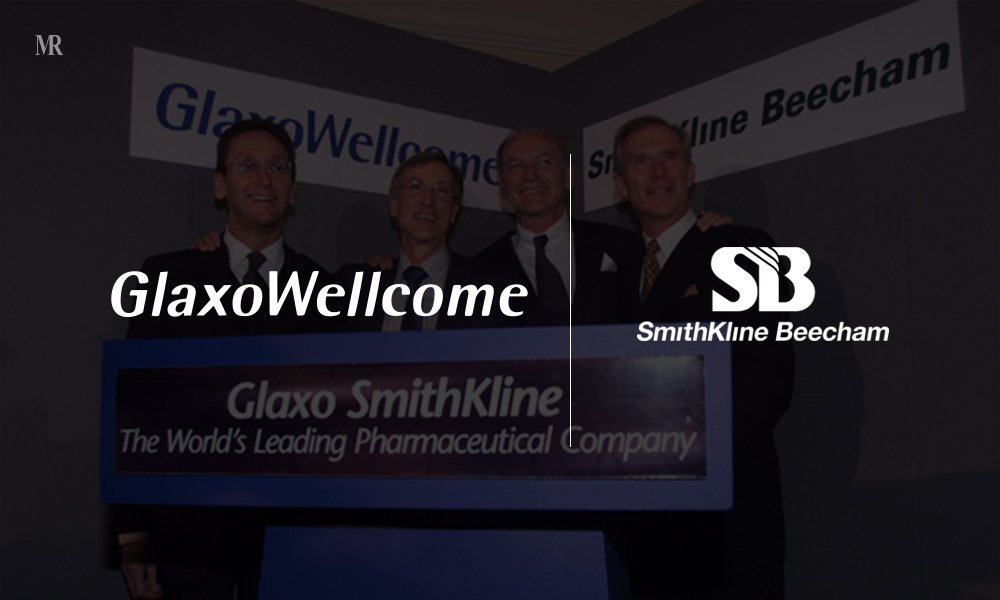
- Purchaser: (United Kingdom) Glaxo Wellcome
- Purchased: (United Kingdom) SmithKline Beecham
- Inflation Adjusted: $134.5 billion
Glaxo Wellcome merged with SmithKline Beecham at a transaction value of $76 billion, creating GlaxoSmithKline (GSK). This established it as in the world and the third-largest corporation globally at the time.
This merger brought about economies of scale, operational synergies, complementary product portfolios, and substantial cost savings.
Glaxo Wellcome shareholders were allocated approximately 58.75% of the new company, while SmithKline Beecham shareholders received 41.25%.
The combined entity captured more than 7% of the global pharmaceutical market, making GSK the leading producer of prescription drugs.
Additionally, the merger helped the company reduce research and development costs, streamline its operations. This successfully made it one of the biggest mergers and acquisitions of all time.
20. Bristol-Myers Squibb acquired Celgene
- Purchaser: (United States) Bristol-Myers Squibb
- Purchased: (United States) Celgene
- Inflation Adjusted: $88.2 billion ($113.2 billion with debt)
In 2019, Bristol-Myers Squibb acquired Celgene for $74 billion, therefore becoming the 20th biggest mergers and acquisitions in the world.
Under the merger agreement, Celgene shareholders will receive 1 Bristol-Myers Squibb share and $50 in cash for each Celgene share, plus one Contingent Value Right (CVR) for future regulatory milestones.
Based on Bristol-Myers Squibb’s closing stock price of $52.43 on January 2, 2019, the total value per Celgene share was $102.43, including the CVR. After the merger, Bristol-Myers Squibb shareholders owned 69% of the combined company, and Celgene shareholders owned 31%.
The acquisition of Celgene allowed Bristol-Myers Squibb to strengthen its oncology and immunology portfolio, including adding Revlimid and accelerated new therapies.
This move enhanced their competitiveness in the growing cancer treatment market against giants like Merck and Roche.
Well, we have now reached the end of our list of the top 20 biggest mergers and acquisitions in history! Let’s conclude by looking at some expert takeaways.
Key Takeaways
| M&A Trends | Description | Examples |
| M&As for Strategic Growth | Mergers help companies expand and increase competitiveness. | Dow Chemical & E.I. du Pont, AT&T & Time Warner |
| M&As for Diversification & Innovation | Mergers focus on diversifying product offerings and driving innovation. | United Technologies & Raytheon |
| M&As for Operational Synergies | Mergers streamline operations, generating cost savings. | Heinz & Kraft, Linde & Praxair |
| M&As for Market Adaptation | M&As help companies respond to evolving market demands. | AB InBev & SABMiller, Royal Dutch Shell & BG Group |
| M&As for Sector Consolidation | Mergers consolidate power, strengthening positions against competitors. | Lockheed Martin & Sikorsky, CVS & Aetna |
FAQs
- What are some recent mergers and acquisitions?
Ans: In February 2024, Diamondback Energy announced a merger with Endeavor Energy Resources at a transaction value of $26.0 billion. The merger closed in September, making it the recent biggest mergers and acquisitions in 2024.
- Which are the biggest mergers and acquisitions in India?
Ans: Some recent successful mergers and acquisitions in India include:
- Vodafone-Idea Merger (2018): Valued at around $23 billion.
- Walmart-Flipkart Acquisition (2018): Worth $16 billion.
- Tata Steel-Corus Acquisition (2007): Estimated at $12 billion.
- What are some upcoming mergers and acquisitions?
Ans: Chevron Corporation and Hess Corporation merger, Capital One and Discover Financial merger, Synopsys and Ansys acquisition, and Mars Inc. and Kellanova acquisition are some upcoming mergers and acquisitions examples for 2025.
Thanks for reading!
Also Read: VR in Education: Next Big Step Forward in the Learning Sector






